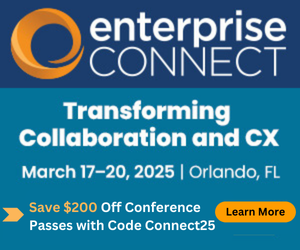12 Ways to Make Customer Journeys Actionable12 Ways to Make Customer Journeys Actionable
Building a customer journey management practice in today's enterprise requires a more holistic and actionable approach.
October 20, 2019

Today, enterprises are seeing a fundamental shift in the routes that customers take to engage with them. This has altered customer interactions into a non-linear format with brands, putting customers on different persona-driven paths at different stages throughout the entire journey. Customers continuously adapt their own paths, interacting with organizations through whichever channels are most convenient at the moment and expecting them to understand the context of their decisions.
Despite this need for enterprise advancement, the process of customer journey mapping has been largely static – a one-and-done exercise led by a team of consultants. That is changing. Today, enterprises require actionable, continuous, and cohesive customer journey management practices. Creating a "journey management brain" requires a shift in thinking from internal efficiency gains to external, customer-driven effectiveness. It also entails the creation of a connected ecosystem that combines speech analytics, robotics, predictive analytics, NLP, and machine learning to correlate customers' actions and behaviors to pivotal moments along a journey map.
The sheer complexity involved in adopting an enterprise customer journey management approach is overwhelming. Data silos make optimizing each moment challenging. Limited visibility makes it guesswork. Enterprises need the tools and strategies to create real-time proactive personalized experiences across devices and channels and inspire positive sentiment and engender loyalty along the way.
Ovum has established 12 essential capabilities necessary to create the foundation to build a customer journey management practice that brings customer journeys to life. These capabilities effectively help connect customers’ pathways in real-time and enable holistic, proactive engagement across an enterprise. They include:
Integrate customer data from third parties, as well as online and offline behaviors and transactions, and create unified customer profiles.
Collaborate with team members on the specific events or issues identified in the journeys through business intelligence, visual dashboards, voice of the customer, or mapping tools.
Define personas after gathering the data and organize the user characteristics into persona groups, which would represent a user segment.
Define the steps that the organization will take to respond to key moments in the customer journeys and continuously communicate with the corresponding teams.
Identify relevant customer touchpoints including channels, devices, and third-party providers.
Predict engagement opportunities along customers’ journeys, their anticipated courses of action, and how their behaviors will evolve over time. Then fine-tune marketing strategies, fix target problems, or take advantage of trends.
Identify relevant content and map it (offers, emails, video, etc.) to each stage in the journey.
Run A/B testing and simulation to monitor touchpoints and interactions and test various flows of specific journeys and how the journeys change and coordinate over time.
Track and visualize journey-based metrics and KPIs and correlate them to the key moments identified along the journey map to determine which behaviors triggered changes.
Identify the micro-moments. This entails analyzing all the small interactions with consumers that enterprises want to win or can’t afford to lose and examining the phases of a customer’s journey to find what inspires people to learn about the factors that motivate customers to purchase or attrite.
Identify gaps in the customer experience between channels and devices and close them.
Operationalize the customer journeys by aligning them to employee processes. Looking at employee experience through a CX lens will allow businesses to spot trends, implement new processes, as well as monitor and evaluate the impact these changes have on overall satisfaction and retention rates.
The Experience Economy, Customer Journey Mapping
The turning point to predictive, relevant experiences exposes the shortcomings of customer journey mapping as a standalone capability. While customer journey mapping tools provide a valuable visual guide and signpost of how to operationalize customer interactions, track sources of negative friction, and pinpoint how to unite different enterprise functions around the customer, they are not actionable solely as visual tools. Customer journey mapping in the Experience Economy requires a shift to a more holistic and actionable approach of customer journey management. With this transformation, enterprises will more readily track, map, analyze, visualize, and act on customer journeys in real time and in personalized ways.
To read, Customer Journey Management’s Path to Optimization, go to www.ovum.com.

To learn more about taking customer journeys from static to actionable, check out Mila D'Antonio's presentation on the topic at Enterprise Connect 2020. Check out the full conference program here, and register today using the code NOJITTER to save $200 off the current rate.
About the Author
You May Also Like





